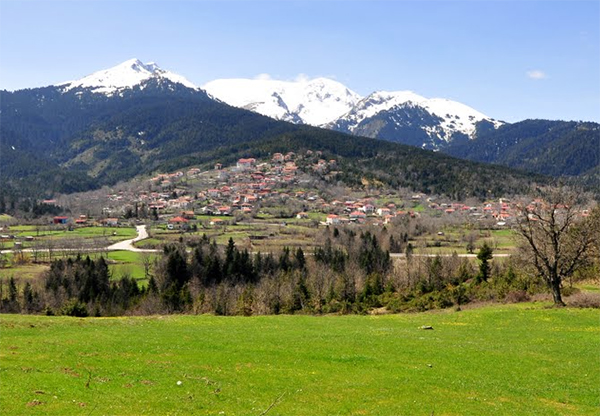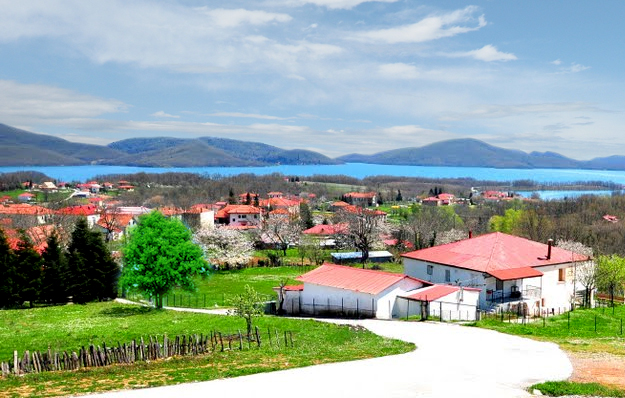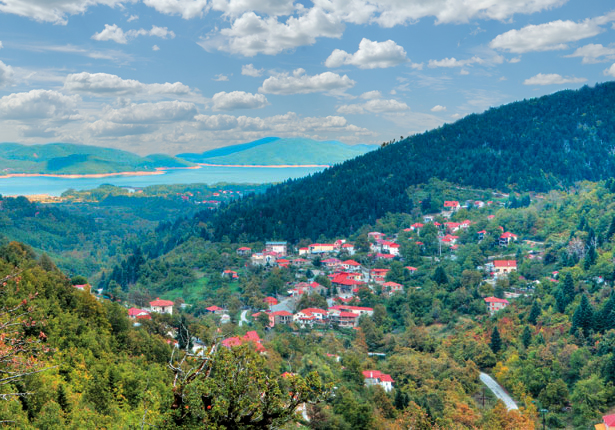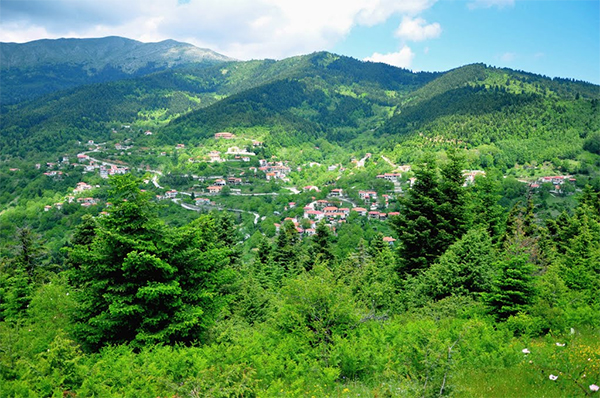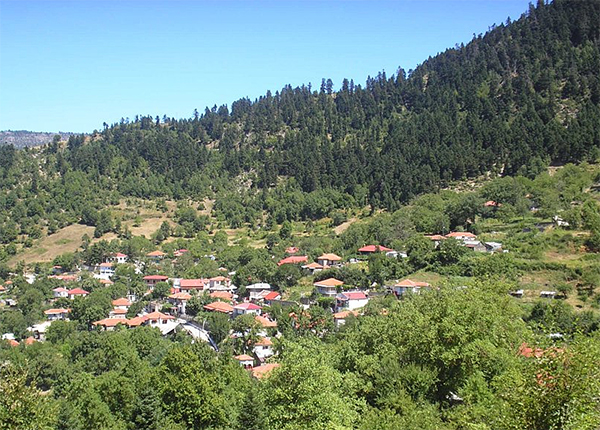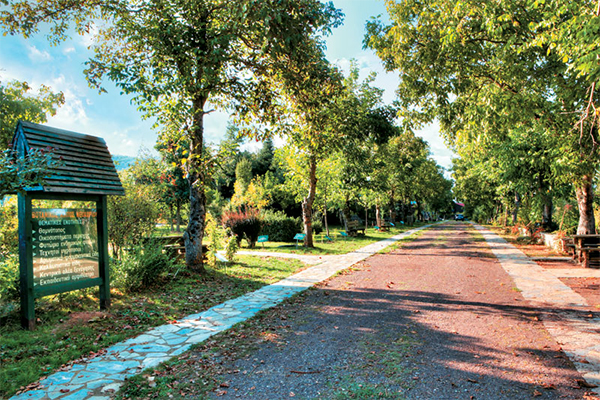| |
| The Center for the Environmental Education, Research and Information has been housed in the old school of Neohori, near the central road, belonging to the competency of the Development Society of Karditsa, since 1996. It aims at providing environmental education, timely information, management of the natural sources of the region, the protection of ecosystems and the promotion of research for the natural environment of the region. It is visited by hundreds of visitors every year, mainly students from all over Greece (tel: 24410 42363). Its contribution to bringing awareness for issues as regards the protection of the environment and the region in general is of vital importance. |
| |
| The dolopes village |
| Our route around the lake continues to the villages of Belokomitis, Karitsa, Karvasaras, the Tavropos Dam and the east side. Its beauty is difficult to described and impresses all year round. We go over the lake's fiords, next to towering firs and chestnut trees. We see Mountain Olympus, the whole east side of the plateau, Mouha, Belokomitis, vast forest with the high firs, the Alonaki Estate and the clear blue waters of the lake.
Belokomitis is 4 km from Neohori and 42 km from Karditsa. The village is amphitheatrically built at an altitude of 950 m surrounded by an oak and fir forest with especially rich flora and fauna. Few people stay in the village during the winter, but their number considerably increases during the spring and summer months. Going past the village and the taverns on both sides of the narrow village road, we see the Keredan canyon with the Gakis cave and the mountaintops Borlero and Arapis. At a small distance from the last house of the village, the signs at the crossroads direct us to the Dam or Karitsa of the Dolopes. Karitsa, a historic village with few inhabitants in winter and two cafe-taverns open all year round, 48 km fom Karditsa. Karitsa is built on the North side of the gorge of the Karitsiotis River, whose clean waters end in Plastiras Lake, going under towering firs, broad-leaved planes and pliant willows. Thousands of visitors go to Karitsa having as their main destination the Holy Monastery of Pelekiti, approximately 3 km above the village, at an altitude of 1.400 m built on a steep rocky slope. The monastery was built during the 15th century and it was concluded in 1529 by Saint Damianos, the new martyr. Its name (pelekiti) comes from the fact that the monastery is hewn from the rock where it is located. It is dedicated to the Dormition of the Theotokos and celebrates on the 15th of August when many events are organised. Going throug the dome-shaped pronaos, we get inside the main church of the monastery complex, the church of the Transfiguration of the Savior, which is single-aisled with a narthex. According to the inscription, the hagiographies were made in 1654.
The other church, the church of Panagia Faneromeni, is built in the Mountain Athos style. According to the inscription the Hagiographies were made in 1666. The monastery has been recently renovated, financed by the EU. It is open most of the days of the year.
Leaving the monaster, after buying herbs, tea from the inaccessible mountaintops of the region, honey or baked chestnuts and other local products from Stella and Sotiris, we return to the central road axis in order to continue our route around the lake and enjoy the other beauties of the area. |
| |
| At the sources of the Karitsiotis River |
|
